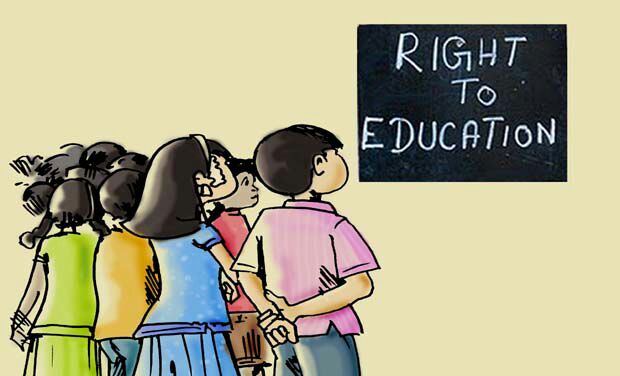Context:
Recently, the Maharashtra government notified to exempt private unaided schools within a one-kilometre radius of government schools from the 25% RTE quota admissions requirement.
More on the News:
- An essential element of the Right to Education (RTE) Act, 2009 is the requirement for private schools to guarantee that 25 per cent of their admissions in Class 1st are allocated to students from the “weaker sections and disadvantaged groups” residing in the neighbourhood.
- Concerns have been raised about disadvantaged students being forced to attend government schools, potentially depriving them of better facilities provided by private schools under RTE.
Section 12(1)(C) of the RTE Act
- It mandates unaided private schools to reserve 25% of their entry-level seats for children belonging to the economically weaker section and disadvantaged groups.
- This provision focuses on the inclusion of children from marginalised communities in private schools and providing educational opportunities to the less privileged.
Impact of the Decision:
- This amendment means that private schools within a 1 km radius of a government or government-aided school (which receives money from the government) will no longer have to observe the 25% requirement. Instead, students in these neighbour hoods will first be considered for admission into said government or aided schools.
- The amendment may affect the balance between private and government schools, with implications for access to quality education for economically disadvantaged students.
- It closes the small window through which some disadvantaged students got to access good education in private schools is now being effectively closed
- With this new rule, Maharashtra has joined Karnataka (2018) and Kerala (2011) in exempting private schools from providing RTE quota admissions.
Reasons Given:
- The provision has resulted in the enrollment ratio dropping drastically in the government schools.
Private schools and teachers’ organisations have highlighted that state governments have often failed to reimburse the fees for students admitted through this quota.
- According to Section 12(2) of the RTE Act, the state governments are obligated to reimburse expenses incurred by the school per child or the fee amount, whichever is less.
- Private schools face financial strain due to the lack of reimbursement from state governments for expenses incurred per child.
Right to Education (RTE)
- RTE Act, enacted in 2009, Ensures free and compulsory education for children aged 6 to 14.
- The 86th amendment to the Constitution of India in 2002 provided the right to education as a fundamental right under Article 21 A, Part III. The RTE Act, 2009 gives effect to a fundamental right 21-A.
Constitutional Background:
- Originated from part IV, Article 45, and Article 39(f) of DPSP, which included provisions for state-funded education that aimed to ensure equitable and accessible education
- Ramamurti Committee Report (1990), Tapas Majumdar Committee (1999), and Supreme Court’s verdict in Unnikrishnan JP case (1993) were pivotal in recognising education as a fundamental right.
Key Provisions of RTE Act:
- Primary Education: Guarantees primary education for children aged 6-14.
- Reservation in Private Schools: Mandates 25% reservation for economically weaker sections in private schools if government schools are not in the vicinity.
- Norms and Standards: Sets norms for pupil-teacher ratios, infrastructure, and teacher qualifications.
- Non-Discrimination: Ensures non-discrimination based on gender, caste, religion, etc.
- Financial Responsibilities: Specifies sharing of financial responsibilities between central and state governments.
Achievements:
- Increased enrollment, improved school infrastructure, and inclusivity.
The Government has launched an integrated school education scheme called Samagra Shiksha Abhiyan, which replaces three previous schemes.
- Sarva Shiksha Abhiyan (SSA)
- Centrally Sponsored Scheme on Teacher Education (CSSTE)
- Rashtriya Madhyamik Shiksha Abhiyan (RMSA)
- More than 3.3 million admissions under the 25% quota norm.
- Removal of “no detention policy” for enhanced accountability.
Limitations:
- Age group covered (6-14) limits inclusivity.
- Lack of focus on learning outcomes, as shown by ASER (Annual Status of Education Report).
- Non-compliance in some states and teacher shortages.
Way forward:
- Inclusion of Minority Religious Schools: Bring them under the RTE ambit.
- Emphasis on Quality Education: Shift focus from quantity to quality.
- Teacher Training Programs: Enhance the quality of teaching.
- Attractive Teaching Profession: Make the teaching profession more attractive.
- Societal Support: Foster societal support for education without biases.

